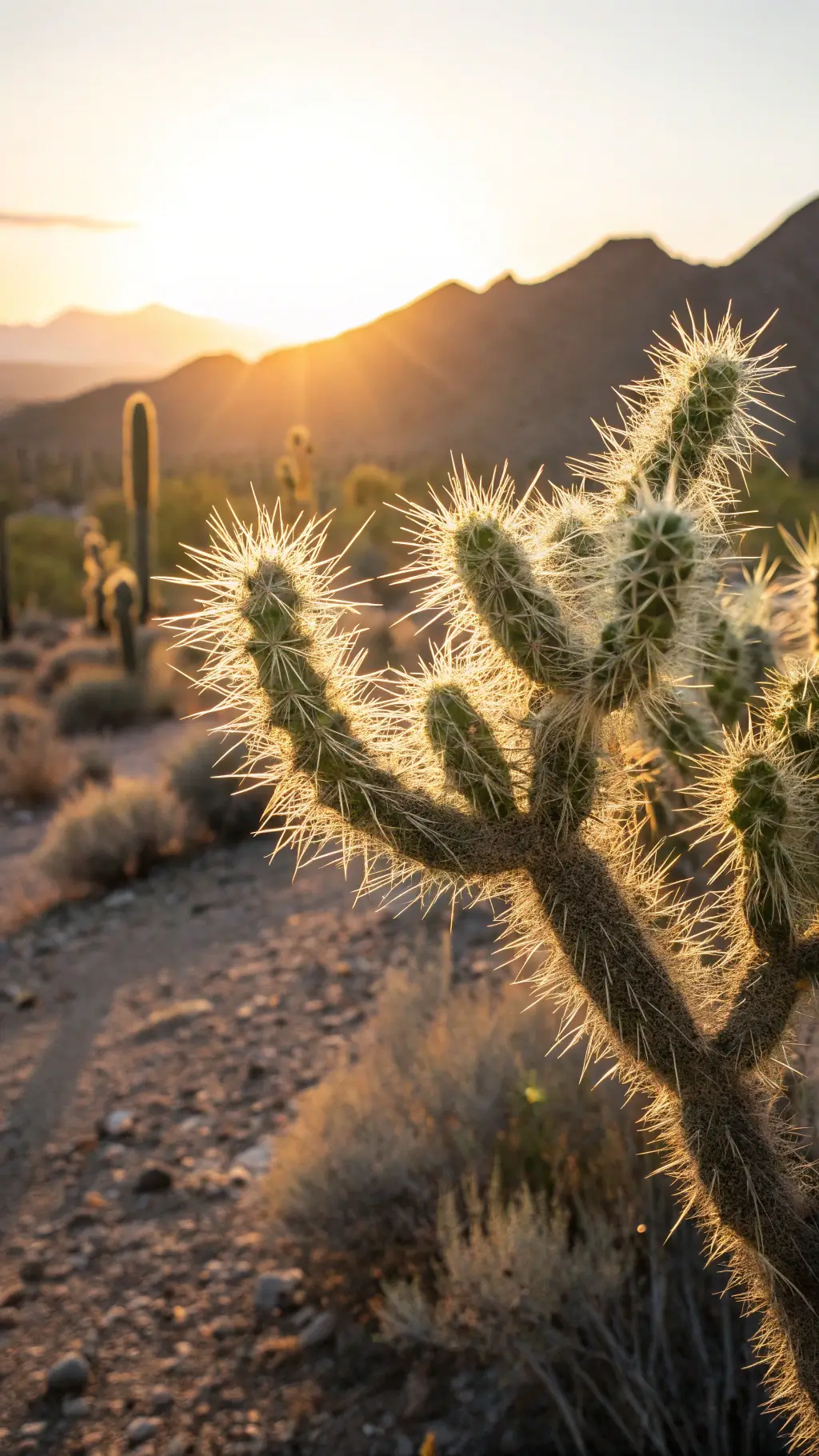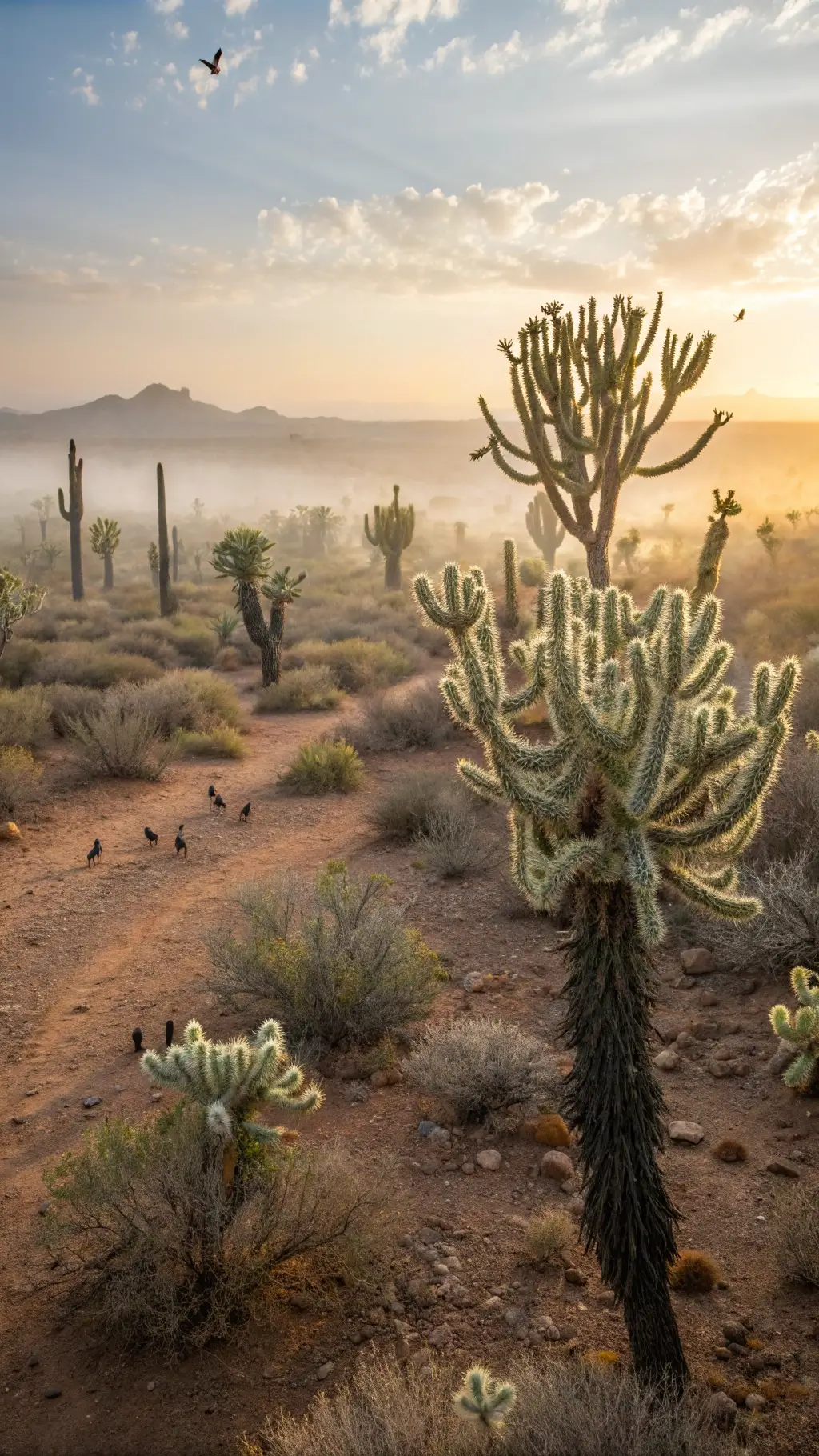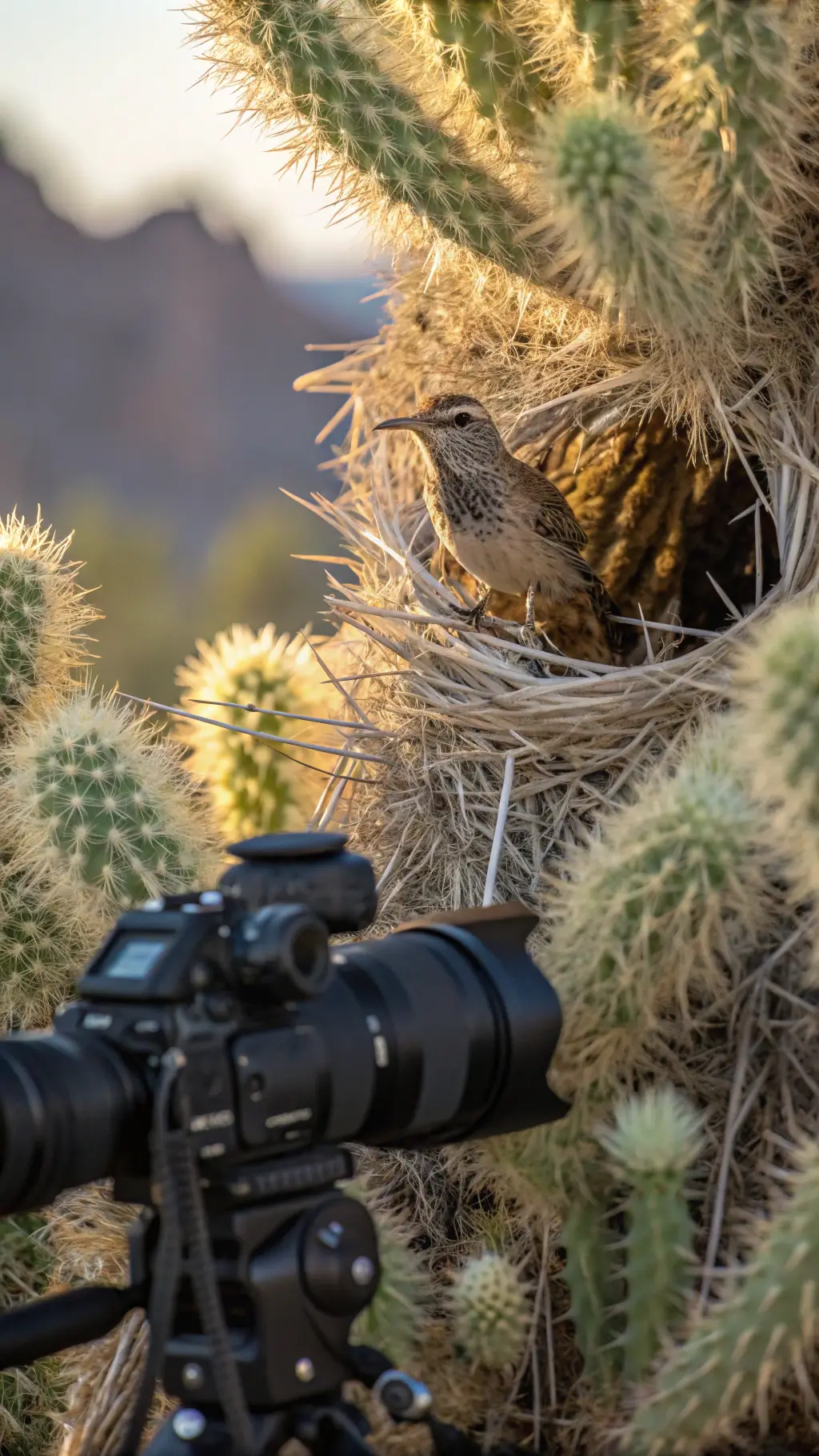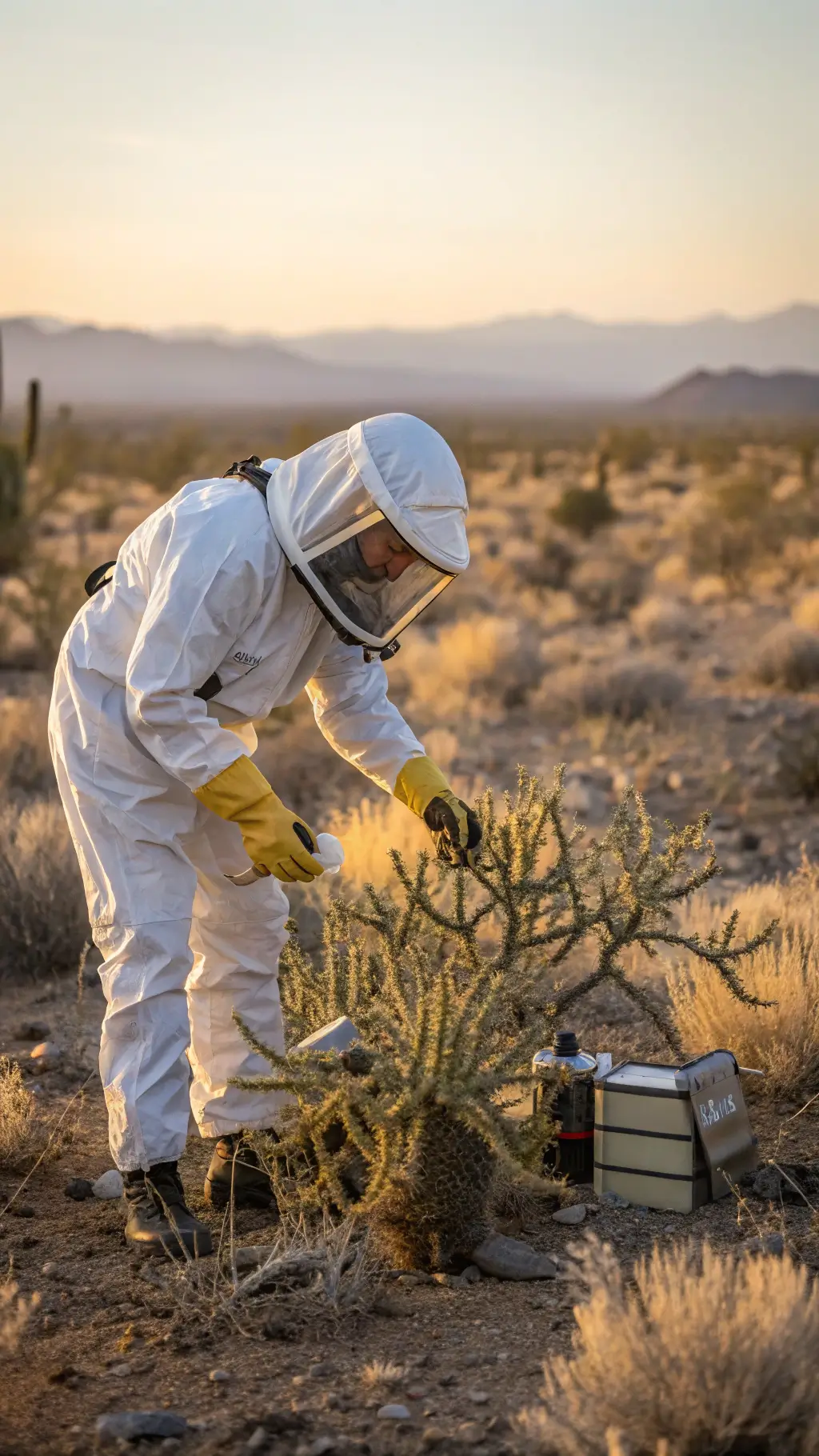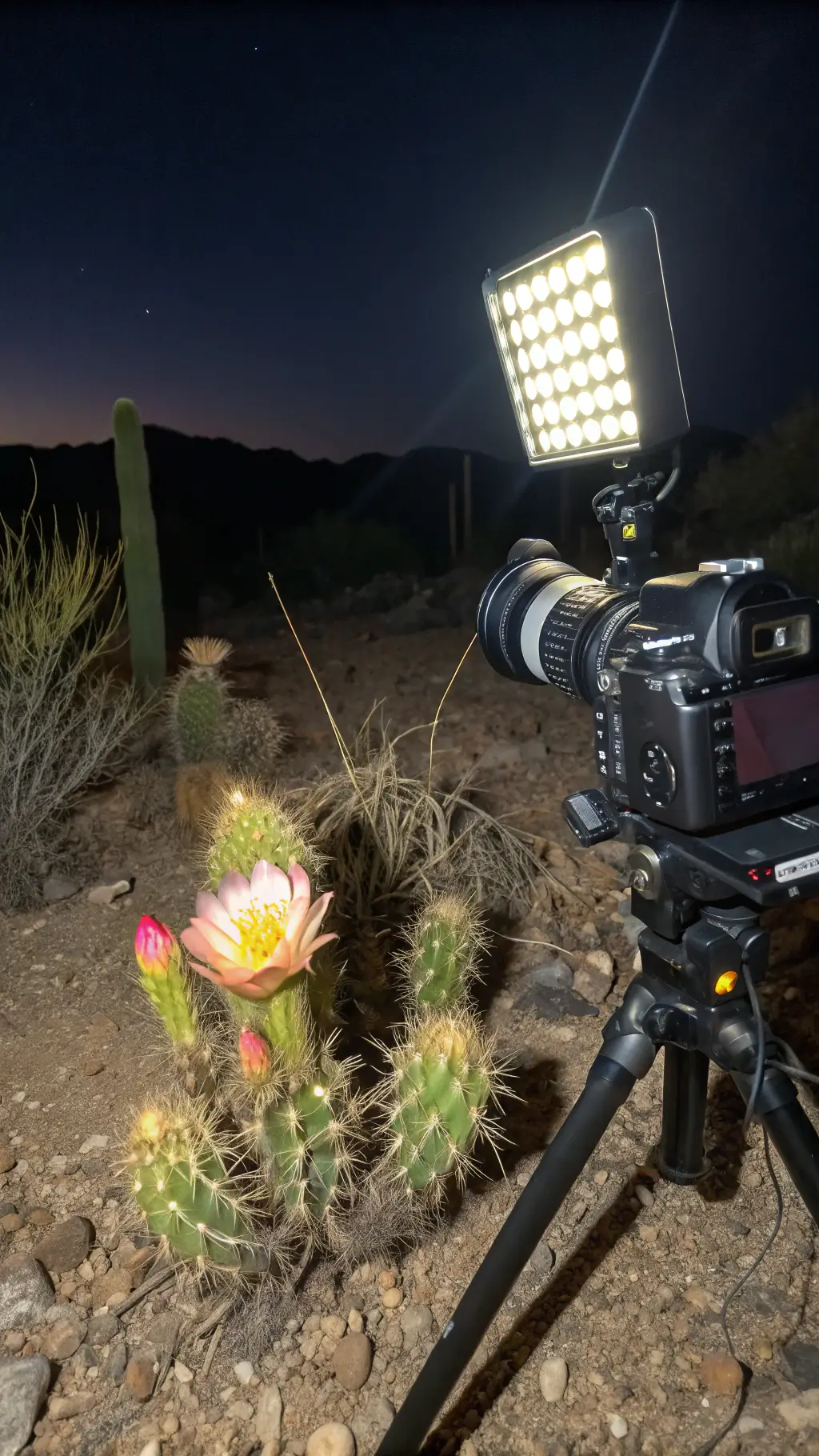The Desert’s Most Misunderstood Plant
Ever wondered why they call it the “jumping cholla”? Trust me, it’s not because these cacti have secretly been taking gymnastics classes!
These spiny survivors are notorious for their seemingly magnetic ability to attach themselves to passersby. I learned this the hard way during my first desert expedition!
Meet the Cholla Family
Let me introduce you to some of the most common types I’ve encountered:
- Jumping Cholla (Cylindropuntia fulgida) – The infamous attention-seeker
- Teddy Bear Cholla – Don’t let the cute name fool you!
- Chain Fruit Cholla – Nature’s own Christmas ornament
- Buckhorn Cholla – The desert’s living sculpture
Living Large in the Desert
Here’s what makes these cacti absolute champions at desert survival:
- Height: Can grow anywhere from 3-15 feet tall
- Sun needs: Full sun exposure (they’re real sun worshippers!)
- Water requirements: Minimal (they’re the camels of the plant world)
- Soil preference: Well-drained (they hate wet feet)
Nature’s Security System
The cholla’s defense mechanism is nothing short of brilliant:
- Detachable segments that readily cling to anything that touches them
- Barbed spines covered in papery sheaths
- Multiple points of attachment that make removal challenging
Wildlife’s Best Friend
Despite their fierce appearance, chollas are surprisingly good neighbors:
- Provide safe nesting spots for desert birds
- Offer shelter to small animals
- Create essential pollinator habitats
- Produce edible flower buds (though harvesting requires expert knowledge)
Safety First: My Top Tips
After years of desert exploration, here’s what I’ve learned:
- Never touch a cholla directly
- Keep a wide berth when hiking
- Carry a comb for emergency spine removal
- Wear thick-soled boots
- Keep pets on short leashes in cholla territory
The Real Desert Survivor
These cacti aren’t just tough – they’re resilient innovators:
- Can reproduce from fallen segments
- Survive extreme temperature fluctuations
- Thrive in areas where other plants can’t
- Create their own microhabitats
Whether you’re a desert dweller or just fascinated by unique plants, the cholla cactus deserves your respect and admiration – from a safe distance, of course!
Remember: The best photos of cholla cacti are taken with a zoom lens. Trust me on this one! 🌵

